In my ViewController, I have 12 custom UIViews(named CardView).
I am trying to iterate through the subviews of the ViewController programmatically to find the custom view(CardView) and do some configuration. Following is my code to count the number of CardViews.
private func cardCount()->Int{
var count = 0
for subview in self.view.subviews{
if subview is CardView{
count = count + 1
}
}
return count
}
However, it is returning me '0' and the reason being my views are embedded inside UIStackViews. I have 3 horizontally aligned stack views inside a vertically aligned one like-
How can I get my CardViews programmatically. Any help would be appreciated.

